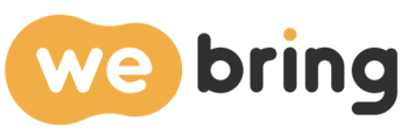Experience K-POP Dance in the Heart of Korea
K-POP is no longer just a Korean cultural phenomenon—it has become a global music genre loved by millions. Groups like BTS, BLACKPINK, and TWICE continue to dominate international charts, and their songs and choreography spark worldwide trends. Many visitors to Korea share a dream: they want to experience K-POP firsthand by learning its iconic dance moves. This growing demand has led to the rise of K-POP dance one-day classes, where fans can immerse themselves in the energy and style of the genre. In this article, we’ll explore what you can expect from a K-POP dance school in Korea and how it can make your trip even more exciting.
Why K-POP Dance? A Fusion of Energy and Style
K-POP dance is a perfect blend of powerful energy and unique style. It features synchronized group performances, intricate hand gestures, and seamless integration with the music, creating a visually captivating experience. Each idol group tailors its choreography to match the mood of their songs, making fans eager to master these moves themselves.
One-day classes provide a chance to learn key choreography from hit songs, deepening the fan experience. Beyond the thrill of executing the dance successfully, the experience leaves you with lasting memories—watching videos of yourself dancing with friends after the trip can bring endless joy. More than just a lesson, it’s an immersive way to connect with K-POP culture on a whole new level.

Introduction to the Class: Stretching and Basic Steps
Most K-POP dance one-day classes last about two to three hours. As students gather, the session begins with light stretching and warm-ups to loosen up the body. Next, participants practice fundamental dance steps—such as front steps, side steps, and wave movements—that frequently appear in K-POP choreography. By gradually warming up and shaking off any nervousness, students prepare for the main routine.
The instructor typically teaches the highlight moves of a popular, trending song. The lesson follows a “Learn K-POP Dance in One Minute” approach, starting with signature moves before gradually integrating them into a full sequence. At first, students practice arm and leg movements separately. Then, they combine both elements to form a complete dance routine. While fast music and complex patterns may seem overwhelming at first, the instructor’s expertise and continuous repetition help students naturally adjust to the rhythm.
The Mirror Challenge: Self-Check and Teamwork
K-POP dance studios often feature a full-length mirror along one wall, allowing students to observe and refine their movements in real time. Seeing oneself in the mirror can be an eye-opener, revealing incorrect angles or posture. Through this self-evaluation process, students gradually develop cleaner dance lines and a better sense of rhythm.
Teamwork is another key aspect of the experience. K-POP choreography often requires synchronized group performances, fostering camaraderie among participants. As students encourage each other and fine-tune their movements together, they form quick bonds—even with strangers. This shared experience is one of the most enjoyable aspects of the K-POP dance class.
The Final Performance: Bringing the Stage to Life
At the end of the lesson, students perform the entire routine from start to finish with music. Initially, nervousness and excitement may combine, leading to concerns about making mistakes. However, as the music plays and everyone dances together, energy surges through the studio, creating a thrilling sense of immersion. Watching the reflection in the mirror—where everyone moves as one—instills a deep sense of achievement.
Some studios record the final performance, allowing students to take home a video of their experience. Sharing this video on social media or with friends can serve as a special keepsake from the trip. For many, the ability to say, “I danced to a K-POP song in Korea,” becomes a unique bragging point among fellow fans.
Exploring Korean Culture Through Music
A K-POP dance class is more than just a dance lesson—it’s a gateway to understanding Korea’s youth culture. By recreating choreography seen in music shows and videos, participants gain insight into the Korean entertainment industry and idol training system. Instructors often share stories about trainee life, debut preparations, and behind-the-scenes details of music broadcasts, enriching the overall experience.
A Memorable Experience Filled with Passion and Excitement
Joining a K-POP dance one-day class adds a burst of energy to your travel itinerary. Dancing to your favorite songs, sweating, and laughing together with others can create a sense of connection—even in a foreign country. Even if your dance moves aren’t perfect, simply embracing the moment makes the experience valuable. After all, one of the reasons K-POP is globally beloved is its infectious passion and excitement.
Even if you’ve never considered yourself a dancer, a one-day class welcomes anyone with a simple “Why not give it a try?” attitude. In just a few hours, participants find themselves immersed in an experience filled with joy and camaraderie. Who knows? After the class, you might involuntarily start moving to the beat whenever a K-POP song comes on. If you return home with unforgettable memories and a newfound love for dancing, that’s the magic of Hallyu—the Korean Wave—bringing people together.
Ready to step into the world of K-POP dance? Don’t miss the chance to create a unique, energetic, and unforgettable moment in Korea!
WeBring Service : Provides personalized services to foreigners living in Korea
Exclusive offer: Introducing foreign car rental in Korea, WeBring-SoCar






